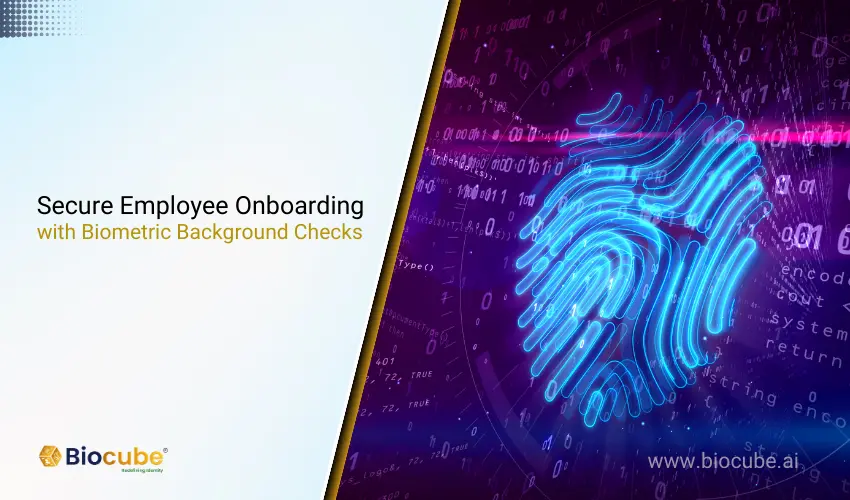
Biometrics have become a popular mechanism for organizations to safeguard themselves against the risks of identity theft, data breaches, and financial fraud. In 2022, Karnataka, an Indian state, reported 3752 cases of online identity theft.
Biometric background checks have become essential for organizations to keep up-to-date with the instances linked to an identity. The process enhances the reliability and accuracy of the results and makes it more transparent.
Table of Contents
3 Ways Biometric Background Checks Enable Secure Employee Onboarding
A biometric background check is a process wherein the physical traits of an individual captured via technology are verified against those registered in the government database. It is a risk-free method of validating the credibility of a person’s physical records and individual identity. But it has many more aspects linked to it.

Biometric Background Checks
Identity Validation
Name-based authentication checks primarily helped to define the credibility of the submitted records. However, with technological advancements, AI can recognize and match an individual’s character and face biometrics with those in the government database.
The involvement of biometrics in the system has significantly enhanced security, as the reliability of personal information mentioned on identities has diminished. Moreover, name-based checks were prone to alterations, misspellings, and other errors, making it hard to ensure credibility. On the other hand, biometrics remain unique to an individual, resulting in higher accuracy.
Authorized Access
Onboarding workers with biometrics ensures that authorized personnel have access to the company’s database and premises. By doing so, the company also resolves the issue of unprecedented breaches and even identifies the person responsible for any mishaps.
On the other hand, the employees would feel much more secure and comfortable knowing that their access and sensitive information is secured with their biometrics and not by any password, OTP, PIN, or maiden name.
Moreover, organizations can even highlight new employees with red flags if their biometrics match a list in the government database.
Avoiding Onboarding Pitfalls
Unlike form filling and physical identity verification, biometric recognition makes it easier for HR and administrative heads to avoid mistakes during the onboarding process. Thus, it helps eliminate common pitfalls during onboarding, such as information overload, delays, lack of structure, etc.
Biometrics’ involvement in the onboarding process makes information highly accurate and authentic, resolving the need to correct names or identities that are often required for issuing ID cards.
Conclusion
Biometric background checks are the future of onboarding. They are very well accepted currently, and make the work easier for the HR and admin heads. Moreover, they enhance security for many reasons.
It primarily brings transparency into the system and removes the reliability of name-based verification systems, which need to be updated, too. It even helps to avoid common spelling mistakes or identity check errors, which could otherwise prove damaging to the organization at compliance and other levels.
Finally, it helps to provide authorized access to the correct person. As a result, the chance of a breach or identifying anyone involved in a mishap becomes easier for an organization during post-investigations.
Biocube offers biometric identity solutions to organizations that are seeking security and convenience. Contact us to learn how we can do that for your organization.
